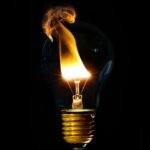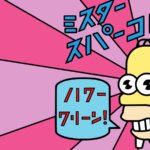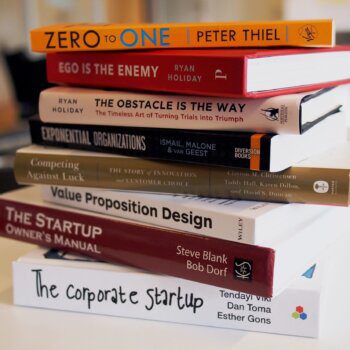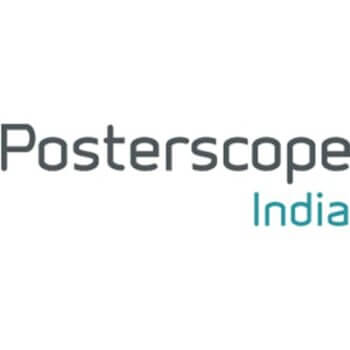Here’s a work life balance tip, forget about it.
I discovered a deep problem in my own work life balance and figured out a simple hack to fix it that took only a minor modification of my behavior and almost zero effort: Forget balance and go for flow.
The Illusion of Work Life Balance
It started with realizing that work life balance is a bad concept.
Work is a subset of life. It isn’t a separate, distinct thing. I’m fortunate to enjoy my work and it’s a part of my life.
What we generally mean when we say we “don’t have work life balance” is that we’re exhausted when we get home. We’re unhappy. We’re stressed.
We’re unable to muster the energy to be present with our family and loved ones. (Or perhaps we don’t have the energy to go out at the end of the day and try to meet some potential loved ones.)
I’ve had this same issue and it’s not a lack of balance. It’s a lack of flow. And I have a fix.
A Destructive Cycle
In the past few years, I’ve often come home completely exhausted and unable to do anything other than slouch over a plate of food and maybe watch a bad sci-fi show.
(My latest discovery of awesomely awful sci-fi is the movie “Grabbers”. It’s about a deadly alien invading Ireland. The alien is allergic to alcohol so the town’s inhabitants have to get drunk to survive. It’s as ridiculously idiotic / brilliant as it sounds. But I digress…)
Having no energy at the end of the day means that I’m not putting effort into my relationship and relaxing at the end of the day. I’d get more and more depleted as the weekday progressed, sleep less, not have the energy to exercise, and then want to sleep all weekend.
That’s simply not healthy.
The Standard Solution
The default advice is simply, “work less”.
It’s an obvious fix, and I’ve tried that. It’s not helpful.
Firstly, my hours aren’t that bad. I’m not working investment banker hours.
Arbitrarily cutting short my hours just leaves key things undone and sitting in the back of my mind, waiting to wake me in the middle of the night.
More importantly, the hours aren’t the issue. Some days, I take off from work early but I’d still be exhausted. Some days, I’d work like crazy but feel energized and ready for a night out.
The Root Cause
A couple months ago, I noticed a pattern in my energy levels.
The correlation was obvious when I sat down and looked at my calendar. Days that ended with lots of meetings back-to-back were bad days for me. I was burned out.
Days when I had alone time near the end of the day were great. I’d leave feeling great.
When I had the opportunity to code, write, or otherwise engage in solo, creative work at the end of the day, I would return home feeling very energized. I’d be excited about my work and feel like I’d accomplished something. I’d bring that energy home and use it to cook dinner, be social, and otherwise be mentally present.
When I had a few hours of meetings at the end of the day, I’d come home feeling drained.
Being an Introvert
This shouldn’t have come as a big surprise. I’m an introvert.
Although I earn a living coaching teams, holding workshops, and generally interacting with people, I find it exhausting.
I seem very sociable and extroverted when I’m on stage, but that’s a learned behavior. My preference is to work by myself on something creative with a clear outcome at the end. Like an article, a presentation, or working code.
So when I take meetings at the end of day, I use all my energy up, right before I go home to be with my family. That’s not good. I would even say it’s selfish.
That’s when it feels like work and life are out of balance. When I have no energy remaining at the end of the work day, it feels more like a quasi-zombie existence than life.
Work Life Balance Tip: Forget Balance and Go for Flow
Armed with my observations about how my energy level is affected by the type of work I’m doing, there was an obvious fix for work life balance flow. I stopped worrying about how many hours I was spending at work and focused on how my workday flowed into my personal life.
I stopped scheduling meetings at the end of the workday. Instead, I schedule my meetings in the mornings and early afternoons. Meetings often start at 7 or 8 am (I do a lot of work with Europe so these are convenient hours) until around 10 am. I then reserve a few hours for solo creative work before I take any early afternoon meetings.
Right after lunch, like many people, I get a bit sleepy. So it’s not a great time for me to sit alone in front of my computer. I tend to lack the willpower to avoid chess.com. However, right after lunch is a great time to work with people. I can borrow their energy and use it to focus on the task at hand.
After 3 pm, I try to avoid meetings whenever possible. This gives me a block of up to 3 uninterrupted hours to do something creative and productive. That’s enough time to accomplish something significant and feel good about my day. It also allows me to recharge and feel ready to talk to humans again when I go home.
The Benefits of Work Life Flow
The new schedule has had an immediate impact. I’m more productive and end my day much more positive about my work. I’m then ready to give my family my full attention.
Instead of defaulting to take out food and TV, I have the energy to cook, debate, and…well….live.
Going home doesn’t feel like an abrupt break or something that’s getting in the way. There’s a natural flow from one activity to the next. From being social to solo creativity to being social. When work and life flow naturally, there is no stress or tension between them.
There have been some other nice side effects:
- I’m drinking less soda because I don’t need caffeine to struggle through 4 hours of meetings.
- I’m being more conscientious about other people’s energy levels and not intruding when they’re recharging.
- I’m watching less TV.
Applying Work Life Flow
Will this work for you? I’m not sure. Give it a shot!
If you’re an introvert…it certainly might. If you’re an extrovert, you may need to reverse my schedule and pack your meetings towards the end of the day.
Here’s where you get to use lean startup techniques for your life. Start tracking metrics!
Identify what works for you instead of reacting to the day. Try tracking how you feel at the end of the day and then comparing that with your calendar.
See any patterns? Try it and let me know what happens in the comments.
This article was written by Tristan Kromer, author at Grasshopper Herder. see more.





























